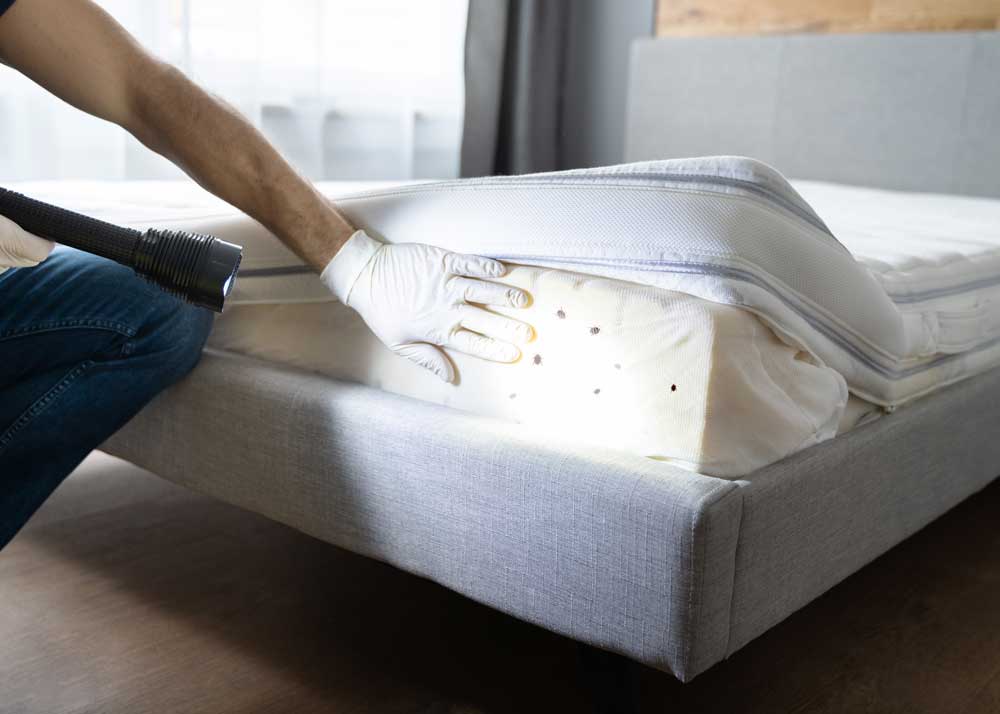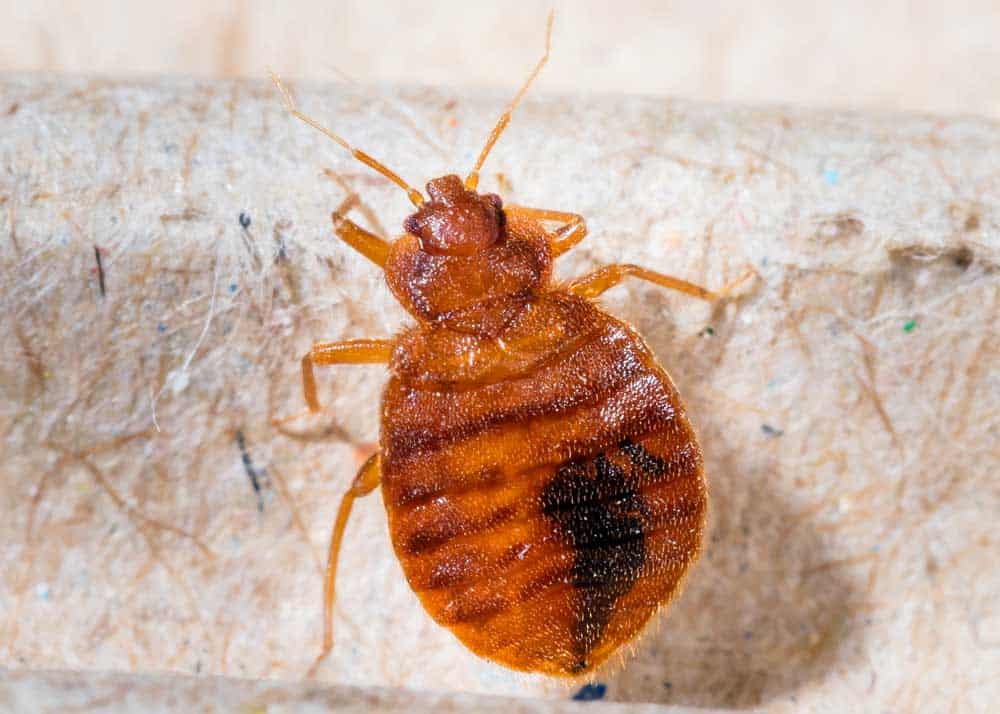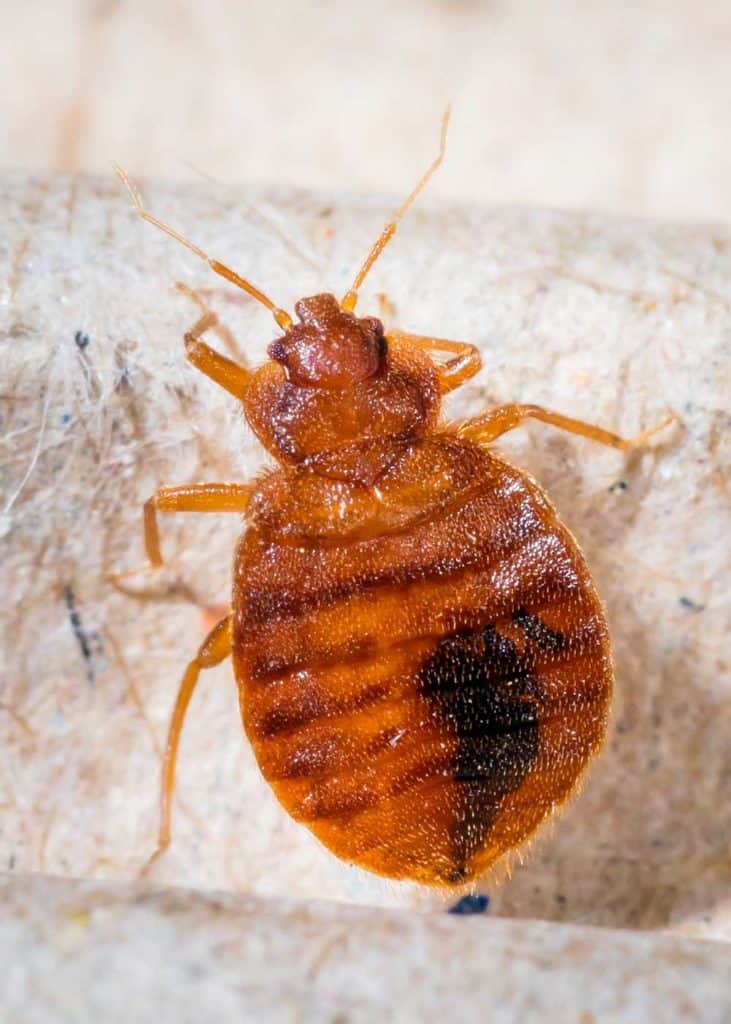Bed bugs are becoming an increasingly common issue and can be easily picked up from retail spots and spread through entire communities. Keep reading if you’re wondering how to spot and treat bed bug infestations. Here’s how to find bed bugs during the day.
To find bed bugs during the day, you’ll need to look for the following signs: red or rust-colored spots (crushed bed bugs), tiny eggs or eggshells (1 mm), tiny spots of bed bug excrement, or even live bed bugs (photos below). To spot, you’ll have to strip your bed of sheets and blankets.

Table of Contents
How to Find Bed Bugs During the Day
Bed bugs can be hard to find if you don’t know what signs to look for and where to start looking.
This section outlines signs of bed bugs and areas where they hide.
4 Signs of Bed Bugs: What to Look For
According to the EPA, there are four signs of bed bugs.
- Red, reddish-brown, or rust-colored spots indicate crushed bed bugs.
- Dark spots, with or without bleeding, are signs of bed bug excrement.
- Tiny dots and pale yellow casings indicate eggs and juvenile sheddings.
- Adult bed bugs look like ticks, and they are reddish-brown and somewhat oval-shaped.

Learn more about other tiny black bugs you might see around the home.
Beds and Cushioned Furniture
If you think you might have bed bugs or want to check an area for bed bugs, start by pulling away bedding or seat covers to check beds and cushions.
Check closely around seams, as well as all surfaces.
Bed bugs can squeeze into areas as thin as a credit card, so any place where the fabric meets fabric or another material is a potential nesting area.
Cracks, Crevices, Outlets, and Other Hideaways
In the case of an intense infestation, bed bugs can hide in any joint or seam as thin as a credit card.
Baseboards, cracks, power outlets, and under the edges of wallpaper are all places you should check, as well as:
- In electrical appliances
- In the folds of curtains
- In the joints of furniture, including drawers and cabinets
These areas are essential to check to ensure you know the extent of the infestation before you begin attempting to treat it.
Knowing what you’re dealing with means you can treat it effectively from the beginning.
How to Get Rid of Bed Bugs in Your Bed
Strip your mattress and immediately bag up and seal all bedding.
These items will need to be washed and dried at high heat for 30 minutes (if you can’t wash them, dry them on high heat longer).
Consider steaming your mattress with a diffuser attachment before applying a mattress-safe insecticide.
Finally, seal your mattress in a bug-proof mattress cover, which will need to remain on your bed for a year to starve the bugs.
To ensure that your bed is safe, you should also:
- Thoroughly inspect your headboard and frame for bed bugs. Spray them down with an insecticide that will last for a few weeks at a time, and respray them as you reach the end of their effective cycle to ensure it kills all of the bed bugs.
- Set up traps under the feet of your bed frame to trap any bed bugs trying to reach the bed, and check them regularly to keep an eye on your infestation.
- Keep your bed set up at least six inches from the wall.
- Tuck your bedding, so it doesn’t touch the floor, wall, or any nearby furniture.
- Clear everything out from under your bed.
How to Get Rid of Bed Bugs in Larger Spaces
If you can, steam all infested areas with a diffuser attachment to begin killing the bed bugs.
Spray an insecticide that is safe for a large, enclosed space over carpets, cracks, and crevices—seal outlets and electronics.
Throw away (or seal for a year) art, picture frames, cardboard, books, magazines, and catalogs.
Infested furniture should be thrown away and spray-painted with “BED BUGS” to avoid spreading the infestation.
Call in the Professionals
If your infestation is too extensive, call in a professional to treat your home. To prepare, thoroughly declutter and clean your house.
Seal any areas bed bugs could hide in, including outlets, cracks and crevices, and wallpaper edges.
Remove pets and children from the space, and ask the professional when it’ll be safe for them to return.
Be ready to monitor the infestation for months after the treatment, as bed bugs are hard to get rid of.
Check out our ID Guide for 6-Legged Insects
How to Get Rid of Bed Bugs
Now that you know how to find bed bugs, you’ll need to learn how to best get rid of them.
6 Active Ingredients That Kill Bed Bugs
- Pyrethrins (botanical insecticides made from chrysanthemums) and pyrethroids (synthetic pyrethrins) kill bed bugs and flush them from their hiding spots. However, there are strains of bed bugs resistant to these chemicals. It’s best to use these in conjunction with other methods, so they don’t just move to another location.
- Chlorfenapyr is a pro-chemical, meaning a chemical that has to be activated to be effective. It kills bed bugs by disrupting the cells in their bodies.
- Neem oil is a biochemical insecticide capable of affecting bed bugs at different life stages. It’s created by cold pressing the seeds of neem trees. Beyond its use as an insecticide, it’s also used in medicine and skincare products.
- Desiccants cause the waxy outer layers of bed bugs to break down so that they dehydrate and die. Because this is a physical reaction, bed bugs can’t become resistant to this treatment method. For health and safety, look for EPA registered bed bug treatment desiccants instead of substituting desiccants made for other uses.
- Neonicotinoids are synthetic nicotines that cause bed bug nerves to fire continuously and overwhelmingly until they die. Neonicotinoids work on bugs resistant against other ingredients in insecticides, making them an excellent option to pair with things like pyrethrins.
- Insect growth regulators change how bed bugs develop, causing them to grow too rapidly or stop growing altogether.
Keep in mind that these are just the most common and effective ingredients on the market.
If you want more help looking for the right product, give the EPA’s bed bug insecticide search tool a try.
What about Lysol? Does Lysol Kill Bed Bugs?

Hate ticks? Here are 14 Ways to Kill a Tick
Finding and Removing Bed Bugs
Look for signs of bed bugs in the seams of furniture and in any areas where they might be hiding, and determine the extent of the infestation before you begin to attempt treatment.
When using insecticides, try to find products that treat infestations with different ingredients and closely follow instructions for health and safety.
Don’t be afraid to call in a professional if the infestation is too much for you to handle!
- About the Author
- Latest Posts
Bryan Haines is a co-founder and writer at The Buginator. And is working to make it the best resource for taking back the outdoors from biting, stinging pests.
He also blogs about travel at Storyteller.Travel and photography at Storyteller Tech. Bryan is a partner at Storyteller Media, a publishing company he runs with his wife, Dena.
